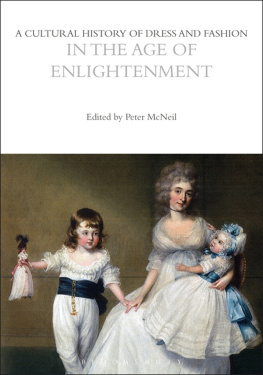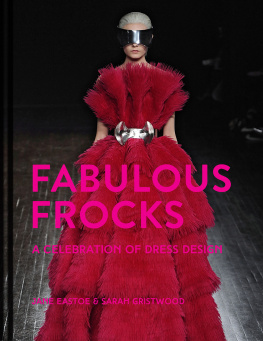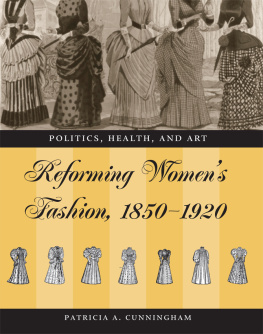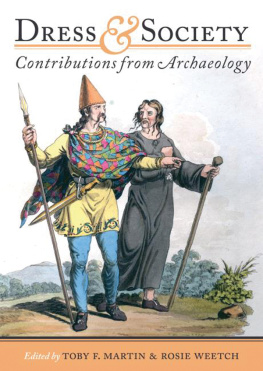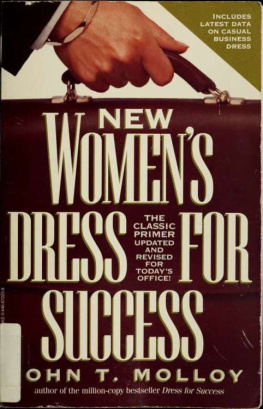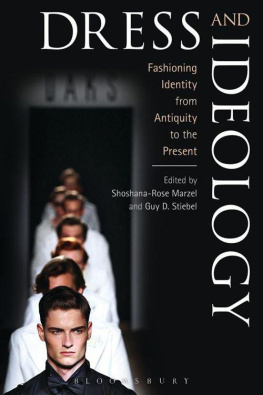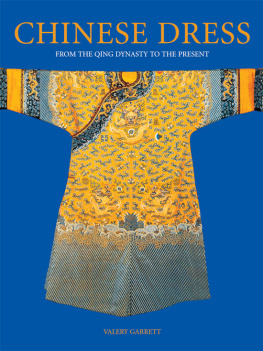MORE ADVANCE PRAISE FOR
The Lost Art of Dress
Linda Przybyszewski takes her readers on an imaginative journey through a largely forgotten universe of women writers in the twentieth century who wrote about the art of dressing well. The book is sprightly and well-written, and it suggests new directions for research in the history of fashion and of women. Przybyszewski offers useful critiques of the restrictive clothing of the nineteenth century, the sloppy clothing of the 1960s, the periodic infantilizing of women through dress design, and the increasing commoditization of products and pleasures. She mourns the loss of the elegance of the 1930s, when women looked both liberated and chic.
Lois Banner, Professor Emerita, Department of History and Gender Studies Program, University of Southern California, author of Marilyn: The Passion and the Paradox
This is an important work. In The Lost Art of Dress, dressmaker and historian Linda Przybyszewski skillfully delineates the rise of the Dress Doctors in the early twentieth century to their demise in the turbulent sixties. Przybyszewski excavated the lost texts of home economists and others who taught the art and science of dress through the application of five principles of art. Although Przybyszewski laments the decline of the teachings of the Dress Doctors during the 1960s, she sees their legacy in the recent rise of the craft of dressmaking and is encouraged by a renewed interest of Americans in the art of dressing well and with good taste.
Patricia Cunningham, Associate Professor Emerita of Fashion and Retail Studies, Ohio State University
The
Lost
Art
of
Dress
The
Lost
Art
of
Dress

The WOMEN Who Once
Made AMERICA STYLISH
LINDA PRZYBYSZEWSKI
BASIC BOOKS
A Member of the Perseus Books Group New York
Copyright 2014 by Linda Przybyszewski
Published by Basic Books,
A Member of the Perseus Books Group
All rights reserved. No part of this book may be reproduced in any manner whatsoever without written permission except in the case of brief quotations embodied in critical articles and reviews. For information, address Basic Books, 250 West 57th Street, 15th Floor, New York, NY 10107.
Books published by Basic Books are available at special discounts for bulk purchases in the United States by corporations, institutions, and other organizations. For more information, please contact the Special Markets Department at the Perseus Books Group, 2300 Chestnut Street, Suite 200, Philadelphia, PA 19103, or call (800) 810-4145, ext. 5000, or e-mail .
Designed by Pauline Brown
Typeset in 11.75-point Adobe Caslon Pro by the Perseus Books Group
Library of Congress Cataloging-in-Publication Data
Przybyszewski, Linda.
The lost art of dress : the women who once made America stylish / Linda Przybyszewski.
pages cm
Includes bibliographical references and index.
ISBN 978-0-465-08047-2 (e-book) 1. Fashion--United States--
History--20th century. 2. Women fashion designers--United States. 3. United States--Social life and
customs--20th century. I. Title.
TT507.P79 2014
746.92--dc23
2013045448
10987654321
To John,
who promised me a good time
CONTENTS
WANDERING THROUGH A USED BOOKSTORE YEARS AGO, I spotted a thick volume called Clothes for You. Ive always been interested in fashion, so I pulled it off the shelf. It turned out to be a college textbook from 1954, but it was like no textbook I had ever seen before.
The books five hundred pages taught the art and science of dress, explaining that beauty in dress can only be achieved by applying the principles of art to clothing. These principles hold true no matter the season, the year, or the century. A woman can use them to choose the beautiful from whatever current fashions have on offer, and it wont cost a fortune so long as she follows some basic rules of economics. If necessary, any girl can learn how to sew and create whatever she needs. The books message was artistic, logical, and democratic: knowledge, not money, is the key to beauty in dress.
The book aroused my curiosity on two counts. First, Im a dressmaker from a long line of sewing women. One of my grandmothers could make anything her daughter pointed out to her in a shop window; the other left me her Singer Slant-O-Matic sewing machine, the very latest in high tech from 1952. My mother sewed and knit clothes for my sister and me when we were little. Sewing came in especially handy when I had to live on a low budget while earning my doctorate from Stanford University. Second, Im a professor of American history. My first book was a biography of a justice on the United States Supreme Court. I may be the only historian to lecture at the Supreme Court in a suit that won a blue ribbon at a county fair.
Clothes for You inspired me to find out more about the art of dress. My hunt took me from the basements of bookstores to the archives of universities. I discovered that hundreds of books and pamphlets were written to teach the American woman how to dress for the twentieth century. Millions of girls read them in home economics classes and in 4-H clothing clubs.
The books were written by a remarkable group of women who worked as teachers, writers, retailers, and designers. They offered advice in classrooms, on radio broadcasts, at womens clubs, and in magazines. They even enlisted the federal government in their efforts through the Bureau of Home Economics. I call these women the Dress Doctors after a story told by Mary Brooks Picken, the first among them.
Born on a farm in Kansas in 1886, Picken was a prodigy who could spin, weave, and sew by the age of five. At eleven, she made the layette of clothes and bedding for her newest baby brother. Widowed young, she supported herself by teaching dress design and sewing to everyone from the respectable young women at the YWCA to the female convicts doing time at Leavenworth Penitentiary.
A skilled woman physician turned to Picken for help, she recalled in 1918. The good doctor realized that people thought her less intelligent than she really was because she dressed so badly, but she had no idea what to do about it because clothes mystified her. So she asked Picken to diagnose her case. Picken examined the doctor and prescribed a professional wardrobe. When the doctor donned her new clothes, she noticed a marked difference in the way people viewed her. Her fellow doctors treated her with more respect. So did the hospital nurses who worked under her. People who had never before bothered to consult her professionally now made a point of doing so. She had been cured.
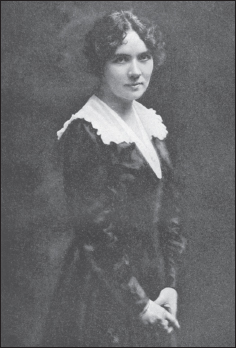
Do we not express ourselves through the clothes we wear as much as through what we say and what we do? asked Picken.
The makeover is a story as old as Cinderella, but the Dress Doctors reinvented it for the modern age. Pickens doctor wasnt trying to land a prince. She was struggling to succeed in a profession in which women were few and far between.
Picken eventually moved east and made herself into the most important authority on dress in America. She wrote dozens of books, including the first dictionary penned by a woman, The Language of Fashion. She helped found the Costume Institute, which is now part of the Metropolitan Museum of Art, and became the first woman to serve as a trustee of the Fashion Institute of Technology in 1951.
Next page

